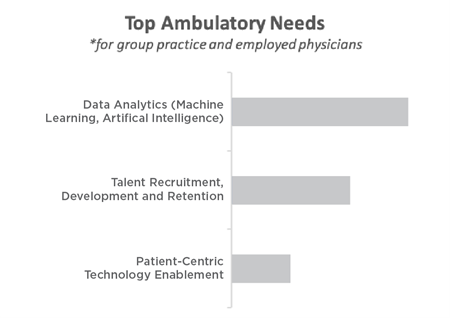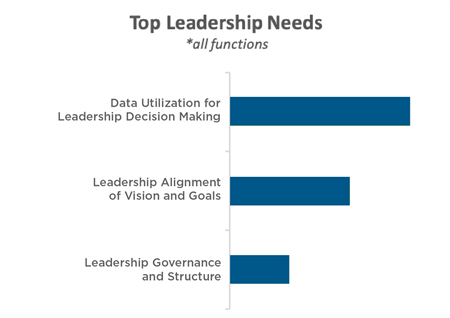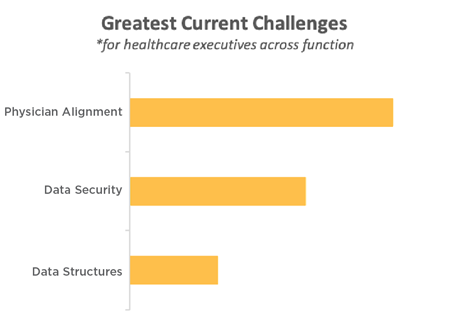In Brief
Huron recently conducted extensive market research to better understand how healthcare leaders are tackling their most pressing problems. Below are aggregated findings from The Future of Healthcare Leadership, Talent and Culture; the Ambulatory Growth Report; and the 2019 Healthcare Executive Survey, which reveal how leaders are rethinking their relationships with physicians and investing in the tools necessary to more effectively recruit, retain and develop the physicians of the future.
Talent
Across organization type or role, all respondents report difficulty in finding and securing physician talent; clinical roles name “talent development” as their organization’s top leadership challenge, and for group practice and employed physicians, “talent recruitment, development and retention” is No. 2 out of their organizations’ top three ambulatory needs. Moreover, the challenges healthcare executives express regarding physician alignment highlight a greater need around qualified and skilled talent. While compensation packages and signing bonuses are important in attracting the physicians of the future, healthcare organizations must prioritize physician wellness and engagement to better retain top talent; growing administrative burden, long hours, no clear vision for the future and lack of resources all contribute to attrition.
Data

The ability to find, analyze and utilize quality data will not only enable physicians to make significant improvements in their performance and in the patient experience; it will also enable organizational leaders to uncover the root causes of major problems such as physician burnout or low patient satisfaction, and to develop strategies that best address those problems. In short, reliable data structures are critical to any healthcare organization’s future success.
Alignment and Governance
Many physicians and other leaders agree on the importance of alignment and governance. Group practice and employed physicians list “alignment with hospital network” as their top ambulatory investment priority for the next three to five years. Additionally, healthcare executives across all functions adamantly view “achieving physician alignment with hospital network for quality” as a pressing organizational challenge. As more physicians leave the independence of private practice for the financial stability of hospitals, leaders have an opportunity to reimagine the physician-hospital relationship. By engaging with physicians differently and aligning around a common vision of the future, healthcare leaders can create the employment models physicians want.


